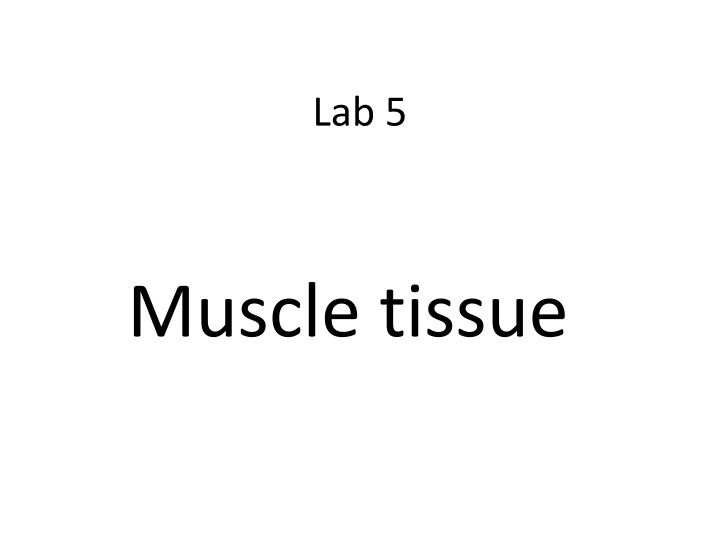
Muscle and Nervous Tissues in Biology Lab
Explore the classification of muscle tissues, including skeletal, cardiac, and smooth muscles, along with insights into nervous tissues such as neurons. Learn about the structure and specialization of these essential tissues in the human body.
Download Presentation

Please find below an Image/Link to download the presentation.
The content on the website is provided AS IS for your information and personal use only. It may not be sold, licensed, or shared on other websites without obtaining consent from the author. If you encounter any issues during the download, it is possible that the publisher has removed the file from their server.
You are allowed to download the files provided on this website for personal or commercial use, subject to the condition that they are used lawfully. All files are the property of their respective owners.
The content on the website is provided AS IS for your information and personal use only. It may not be sold, licensed, or shared on other websites without obtaining consent from the author.
E N D
Presentation Transcript
Lab 5 Muscle tissue
Classification of Muscle tissues a. Skeletal muscle 1) Striated and voluntary 2) Found mostly attached to the skeleton 3) Nuclei are peripherally located
b. Cardiac muscle 1) Striated and involuntary 2) Composes the majority of the heart wall (myocardium) 3) One central nucleus
c. Smooth muscle 1) Non striated and involuntary 2) Found mostly in the walls of hollow organs and vessels 3) One central nucleus
Nervous tissue Is a tissue that are specialized for receiving different types of stimuli. Neuron Consists of: Cell Body : contains Nucleus, Mitochondria, Nissl bodies Dendrites: highly branched extensions of the cell body. Conduct impulses towards the cell body Axon: a single long process. Conducts impulses away from the cell body. Is a tissue that are specialized for receiving different types of stimuli. Neuron Consists of: Cell Body : contains Nucleus, Mitochondria, Nissl bodies Dendrites: highly branched extensions of the cell body. Conduct impulses towards the cell body Axon: a single long process. Conducts impulses away from the cell body.
Structural of Neurons: 1. Multipolar neurons: more than two processes one is the axon and the rest are dendrites 2. Bipolar neurons: have two processes one is axon and other one is dendrites 3. Pseudo unipolar neurons: have a single process close to the perikaryon.














